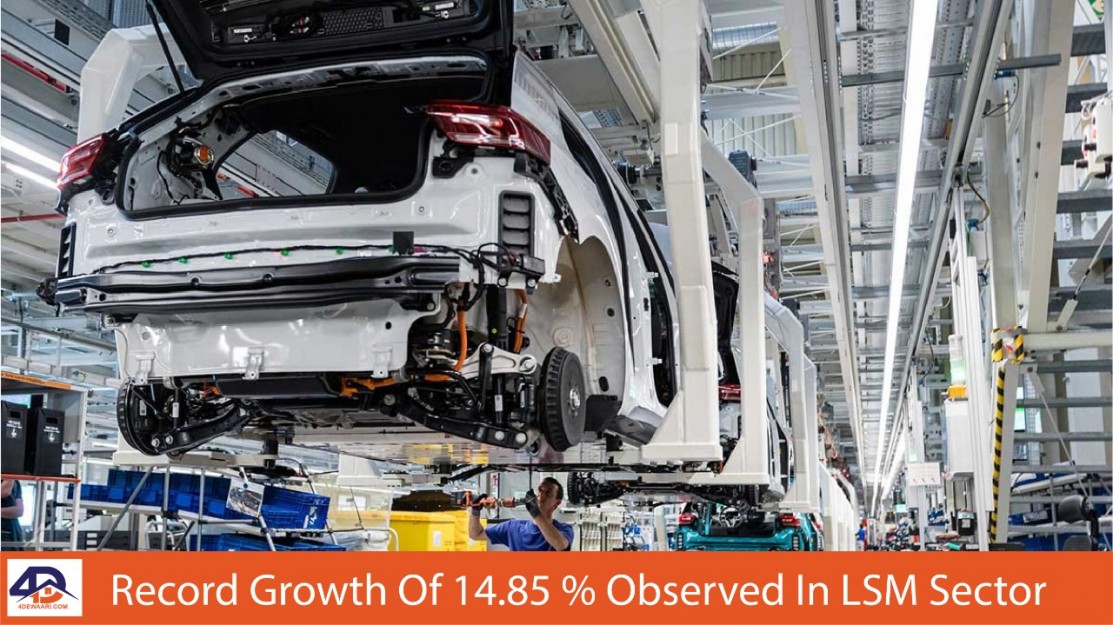Islamabad
In June 2021, eight large-scale manufacturing (LSM) industries achieved double-digit growth, ranging from 10% to 89%.
Details
LSM Sector Growth Rate The growth is driven by textiles, food, beverages, tobacco, petroleum, pharmaceuticals, chemicals, minerals, automobiles, fertilizers, and steel products. The growth in fiscal 2021 is 14.85%. The improvement in fertilizer production during the analysis period was attributed to the increase in urea production after the LNG plant was put into operation, while the industries that experienced deterioration during the year were less weighted in the LSM index, such as wood, leather, engineering, and rubber products, and their production decreased by 39% and 26%, respectively, 15.4% and 15%. An advisor to the Prime Minister of Trade and Investment Abdul Razak Dawood announced that the large-scale manufacturing (LSM) sector has grown to its 16-year level. Overall, in the 2020-21 fiscal year, most major LSM categories have achieved strong growth, mainly due to the low base effect and the high-growth tax incentives provided to the manufacturing industry. According to data released by the Pakistan Bureau of Statistics (PBS), industries including automobiles, petroleum, steel, minerals, chemicals, textiles, pharmaceuticals, and fertilizers have increased by 89%, 39%, 33%, 33%, 24%, 12 %, 11%, and 10%. In general, in the 2020-21 fiscal year, the automotive, mineral, chemical, petroleum, steel, pharmaceutical, textile, and food industries are the main industries that have increased production levels by 51%. In the case of commercial vehicles, in FY21, the interest rate environment for auto financing will be expanded. Automobile production achieved the highest year-on-year growth of 51% in FY21, and negative year-on-year growth of 44.6% in FY20, mainly due to the increase in the production of jeeps and cars, trucks, tractors, and light vehicles, which have good macroeconomic indicators and low-interest rates. In the 21st fiscal year, aviation fuel production increased by 75%, gasoline increased by 30%, diesel increased by 50%, light diesel increased by 425%, and furnace oil increased by 30%. 63% and LPG production increased by 23%, while kerosene production decreased by 6%.
See Also
Two Megaproject Rwp
PBS data shows that all state manufacturing data collection agencies have released their production growth for the 21st fiscal year. In FY21, it was mainly due to strong international demand and favorable government policies to promote exports. The growth was attributable to the reversal of the deindustrialization that had previously been underway. In June 2021, LSM increased by 18.42% year-on-year, continuing the upward trend in recent months. The Ministry of Industry measured the production trend of 36 projects, and the production increased by 11.21%. The 65 products produced by the Provincial Statistics Department increased by 2.68%. Historically, Pakistan’s manufacturing industry grew at an average rate of 8% between the 1960s and 1980s but fell to 3.9% in the 1990s. LSM accounts for 80% of manufacturing. In previous years, the LSM contracted GDP, and most analysts blamed the poor conditions of the IMF for the economic slowdown. Tightening fiscal and monetary policies to achieve fiscal sustainability and control the balance of payments has curbed growth. In addition, the rupee also depreciated to reduce imports and promote exports. In addition, public expenditure has also been drastically reduced to manage the fiscal deficit.















